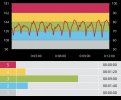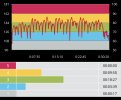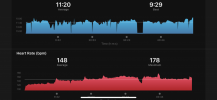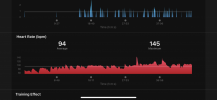Alexander Halford
Level 8 Valued Member
Thanks for this post. Another proof that the volume of strength work of 5 reps per set is the top long-lasting strength method.
I was myself surprised by how long it took to be back to even jogging slowly. I attribute the recovery to all I learned from this forum over the years, which seems to have done wonder for many broken bodies. From many posts, I now always follow the same protocol after a muscle injury (caveat: I am not a doctor, and I don't even play one on TV):groin pulls are notoriously slow to heal - based on those people I know who've had them, I'd say you made a pretty quick recovery.
Dead bugs have been a revelation after years of hanging leg raises and front lever work.I was myself surprised by how long it took to be back to even jogging slowly. I attribute the recovery to all I learned from this forum over the years, which seems to have done wonder for many broken bodies. From many posts, I now always follow the same protocol after a muscle injury (caveat: I am not a doctor, and I don't even play one on TV):
1 - Get back to moving as soon as possible, but see #2.
2 - If it hurts, don't do it. A bit of pain that goes away as you warm up may be acceptable, as long as you don't regress. If you do something and it hurts more the day after, you went too fast (a bit of soreness is acceptable, pain is not). Even then, it's not a contest about how tough you are. There may be exceptions for people who have been really broken in which pain is inevitable, but this seems to be a very good guideline for someone not working under professional supervision.
3 - Start with what you can do. That usually means restricted range of motion and very small load. Increase from there gradually. Always keep 2 in mind.
4 - I am not a pro athlete. This is not a race. The goal is to recover normal function eventually, if possible. See #2 (I think you will see a pattern developing now). If you need a break one day, take it. If you hit a plateau and do the same thing for a few weeks, that's where you are.
5 - Be humble and patient. When I started squatting again, I had to do body weight squats assisted with my arms. That's OK. I am now back to goblet squats with the 40kg and started doing Zercher squats (load still limited by injury recovery). I went up to 165lbs, but that was not comfortable in the groin and is still far from my strength limit. 135-145 is probably the sweet spot for now. See #2
6 - I do Original Strength work (mostly deadbugs, bird dogs and rocking, but also a bit of rolling), along with hip flexor stretches 5 times a week. I have no idea if this is required for healing or not, but my body feels good when I do it. Deadbugs definitively work the area that was injured and it's getting stronger.
I got all this from this forum. So, I thank everyone who has posted injuries and recovery over the years.


Is 39 your age? Overall looks good I think, but maybe HR running just a bit high. I'd give it another 15 or 20 seconds of rest between your repeats, looking at your second session with 24kg. (16kg is probably too light for you to get good A+A work, so that first session has a good pattern, but doesn't tell us much.) Also, make your rest intentional -- shake the limbs, walk, take deep nasal diaphragmatic breaths, tune into your body's sensations. When you feel ready -- and until you know what that feels like, go with the timing you're currently doing + 20 second -- go again. Make sure your swings/VPP are great form and you really dominate that kettlebell, emphasizing power and explosiveness.39 Male 6'0"" 190 LBS
Sounds like you're experiencing cardiac drift. Staying properly hydrated, including electrolytes, and being acclimated to your environment can help, but it will almost always eventually happen.I can keep my hr down below 140 for the first couple of miles and run like an 11-11:30 pace. Even though i keep that pace my hr starts to climb towards the threshold 150-160. We also have 2ft of snow on the ground right now so i think that’s making it harder too.
my real question though is how can i keep my hr down later in the run?
I admittedly have not been hydrating since it’s so cold and only 5 miles. I will try that for next time.Sounds like you're experiencing cardiac drift. Staying properly hydrated, including electrolytes, and being acclimated to your environment can help, but it will almost always eventually happen.
Had never heard of that one. I would actually fit the bill for that pretty well. I’ve been marathon training pretty non stop for two almost two years before the start of my break in November. I would routinely train in the 150’s and above for hours. Definitely interested in building up my true aerobic efficiency.Or Aerobic Deficiency Syndrome...
I don't know if a couple miles is enough to have a lot of cardiac drift from fluid loss. Might just be the "aerobic deficiency syndrome"Sounds like you're experiencing cardiac drift. Staying properly hydrated, including electrolytes, and being acclimated to your environment can help, but it will almost always eventually happen.
I would tend to agree, couldn’t hurt to bring my little hand bottle though.I don't know if a couple miles is enough to have a lot of cardiac drift from fluid loss. Might just be the "aerobic deficiency syndrome"


I’ve been contemplating getting one...I’m just so dang cheap! At this point I want my 32kg more than anything. Chest strap next!I have a similar watch ( garmin 245). In my experience the wrist based heart rate is VERY inaccurate, even for steady state cardio like running. So i always use it with a chest strap.
